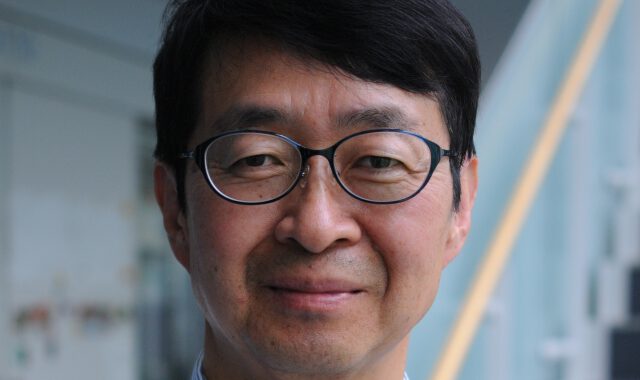Dear visitor of our page, Dear fellow Raman spectroscopists:
This message is for those of you who have been curious about SERS but have found commercial products to be too expensive to try. So here is your opportunity to try the SERS technique free of charge and without obligation.
Before I continue, let me introduce myself first. I am a professor in the Faculty of Life Sciences, at Toyo University, Japan. I returned to the academia some ten years ago after years of working in the industry for companies such as Hitachi, Ltd., and Fujirebio Inc., a diagnostics company. My last twenty years have been spent on perfecting noble metal nanostructures for plasmonic applications such as localized surface plasmon resonance sensing, surface-enhanced fluorescence and most recently surface enhanced Raman spectroscopy, SERS.
In our lab, we routinely prepare our own SERS substrates, and with a bit of exaggeration, I might say my students and I carry out more SERS measurements than any other group in Japan, and we always have a big presence at biannual conferences organized by Japanese Analytical Chemistry Society. What we measure ranges from ubiquitous rhodamine 6G and Bisphenol E (BPE) to food additives, fungicides, and enzymatic products.
Recently, we even took measurements of volatile sulfur-containing compounds from durian, a fruit notorious for its exotic smell. You can imagine what havoc we caused when the cutting up of a durian fruit took place in our lab. I am sure that our fellow neighbors loved us for that!
Having been making many SERS substrates, we were obviously very curious as to how they compare with commercial products. Now and then, we purchase commercial products. It seems that our SERS substrates perform better than these commercial products. I wish we could say our SERS substrates outperform them with flying colors, but this is where our dilemma starts. Commercial products are so expensive that we can carry out a limited number of comparative tests.
Therefore, if you are willing to help us with the evaluation, we would offer our SERS substrates to you. Just inform us what you would like to measure; the target molecule, concentration, quantity and purity. Then we will try to figure out which of our three different SERS substrates would work best for you. However, there is a trade-off between sensitivity and ease of use. One type might be for first-time users who might value robustness over ultimate sensitivity, another for those experienced users willing to carry out some preliminary work for the utmost sensitivity. We also have something in between. We will first send you a substrate with ten SERS spots. The only thing that we will ask of you is to tell us whether it has worked or not.
You don’t even have to bother to send us a report. We won’t even ask you to sign a non-disclosure agreement concerning our SERS substrates which are protected by a number of Japanese patents. After evaluation, just send us a photo showing that our SERS substrate has been destroyed after your evaluation. Literally this only means wiping nanoparticles off the substrates. After all we do not want unauthorized users evaluating our substrates without our knowledge. I hope you understand our concerns.
If you think our SERS substrates might be useful for your work or research, we will be more than willing to send you an additional forty SERS spots, again free of charge and without obligation. If you really like them, please drop us a note. We will be more than happy to continue supplying them for a minimal fee. In the meantime, we will continue to hone our skills at making SERS substrates while waiting for your further requests.
Hiroyuki Takei

